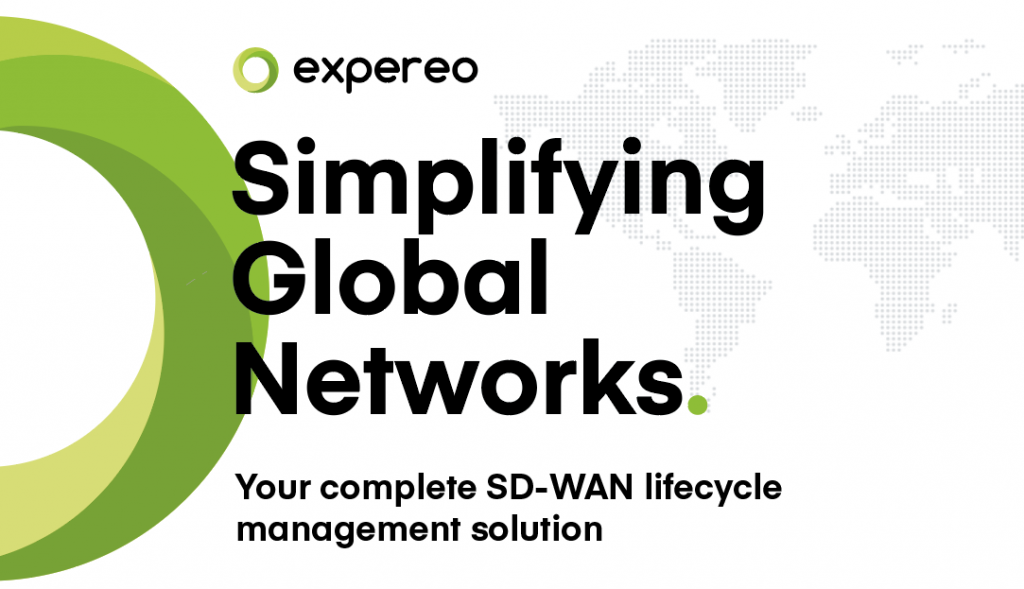
The software-defined network hits the mainstream, for APAC businesses & beyond
Before companies and organizations began to rely on the internet to conduct business, when there was a break in connectivity, the disruption was minimal. Although email was a useful tool and surfing the early web an informative if frustrating experience, the day-to-day tasks of the business could be achieved, despite the break in connectivity.
Today, however, things are very different. In many small businesses, and certainly in organizations with more than a dozen or so employees, even the phones on staff desks run on VOIP. Cloud-based services are central to the organization’s activities, and the head office, branch offices, and every remote worker rely almost entirely on constant uptime.
Early this millennium, MPLS (multiprotocol label switching) became a must-have for most companies of any size: it was the necessary step-up in operational capability once ADSL proved insufficient. Organizations bore the high cost and glacial install timetables because they knew that the uptime guarantees, and available bandwidth were worth it. The technology allowed a transition to a more cloud-oriented computing model, so even the connection’s cost could be offset against the CAPEX savings the cloud brought – plus, of course, the cloud-based apps and services created immediate business agility and capability.
But as our reliance on the internet increases, the MPLS circuit option is being outgrown. Its cost has remained predictably high, and as edge deployments of technology grow in number (think for example of a retail operation with multiple stores, or a service company with various remote offices), connecting each becomes a costly matter. Companies that opt for different tech to enable remote installs might save by using 4G, SDSL, ADSL or similar, but will lose in terms of connectivity speed and uptime.
There’s also the overhead of having to organize truck rolls of technicians and equipment for remote installation of hardware, then the inevitable tweaking of configurations, plus realignment of cybersecurity measures, load balancing, traffic prioritization and so forth.
The new kid in town is SD-WAN – software-defined wide area networking. It’s a technology that offers multiple advantages to businesses and organizations in terms of its immediate costs, but also in long-term gains in lowered running costs and upkeep. Plus, it brings the type of business agility that even the fastest MPLS lines (and multiples of expensive MPLS lines, too) could never deliver.
Because the basis for an organization’s geographically diverse wide-area network is defined in software, it means that traffic can be routed and shaped between, for instance, HQ and remote branches, edge installations, factory floors, utilities’ substations – in short, wherever your business might take you. But the abstraction of inter-site and internet connectivity into software also brings many more distinct advantages:
- It’s less expensive than MPLS, so operational and capital costs are lower.
- Because it’s software-based, new branches or edge deployments take fractions of the time to connect and deliver.
- Software and services can be prioritized: VOIP for the sales-based offices, media streaming services for the creative labs, IIoT traffic for the manufacturing plants, and so on.
- Makes security less of a headache. Centralized policy control can be spun out to cover the entire business’s assets as easily as head office protects itself.
- Creates a proactive monitoring system that automatically switches over to backup (AKA failover) connections without service interruptions. Problems can be remotely diagnosed and solved from a central dashboard or facility.
- Has the ability to draw out data that will show network bottlenecks and pinpoint where resources are best deployed or are being underutilized.
- Creates an elastic networking framework capable of evolving to businesses’ changing needs.
Bare bones applications and services tend these days to be cloud-based or accessed remotely. Workaday solutions like Office 365, Box, Salesforce, DocuSign, and the like all rely on smooth connectivity that’s reliable and safe. When these services slow, or are threatened by cybercrime or are disconnected, the workplace can grind to a halt – in today’s business environment, none of these is acceptable.
Here at Tech Wire Asia, we’re looking at three suppliers of SD-WAN technologies that, we feel, can bring your organization the type of competitive advantage that will pace your company ahead of its competitors.
EXPEREO

Expereo’s offerings provide companies with software defined network management and high quality internet services apps that oversee and control the estate on which organizations run their applications. Its SD-WAN creates the framework to steer application performance in a way that ensures higher user satisfaction and increased business productivity.
As cloud services and apps on which companies rely as their lifeblood have become mainstream, Expereo’s solutions ensure fast and responsive services to customers and internal stakeholders. The company’s intelligent algorithms ensure reliable, high-performance internet connections that always deliver on user expectations.
Through its application-aware prioritization, Expereo’s SD-WAN service creates both the insight (what’s happening on our networks) and the control mechanisms (reallocation of resources as necessary) required by new-age digitized enterprises.
With its many years of experience in supporting businesses on their digital journeys, the compay understands that the massive increase in reliance on internet services spells the requirement for best-in-breed SD-WAN estate management solutions. Expereo’s services provide enterprises with the foundation on which to build for the digital world with technological innovations in progress.
Ultimately, all tech today communicates increasingly, if not almost solely, via internet services; that’s not a trend that’s going away.
Expereo provides global, end-to-end SD-WAN lifecycle management based on decades of experience with Internet connectivity, from design, deployment and management to 24/7 NOC + CSC operational support for day-to-day responsibilities.
To read more about creating essential internet connectivity and SD-WAN solutions for the global enterprise, click here.
RIVERBED
Riverbed offers a range of solutions for the business concentrating on digital transformation, including an SD-WAN platform that makes it a simple matter to set up a remote office using quick-to-deploy, cheap connectivity technology.
The software abstraction layer, controlled by a modern GUI from a centralized point of control, means that connections can be aggregated. That means end-users connect with one another, customers and cloud services (for instance) with all the speed of a leased data service, but without the long lead times and high costs, upfront and ongoing.
That type of malleability gives organizations a great deal of scalability and agility, the kind that simply wouldn’t be possible unless every remote office had a phalanx of technicians and hardware on-site permanently.
Connectivity between sites is secure– not only because of the single, centrally determined security policies but also because inter-site traffic can be placed into dedicated VPNs but without the tortuous, manual configuration of unfriendly client software. Additionally, with different VPN flavors needed for different routers or POPs, configuring these at local level can be a hit-and-miss affair— not so with Riverbed.
CATO NETWORKS
The Cato Cloud SD-WAN is built on the company’s own network. That’s privately owned, so the public internet (an unpredictable place in terms of network traffic QoS) is counted out of the equation.
Despite being a relatively young company, Cato is going from strength to strength in Asia, with companies finding its self-healing, proactively monitored connectivity a draw for maintaining happy customers.
Cato’s platform can sit alongside most existing hardware– anything capable of parsing IPSec protocol is usually fine– so this isn’t a tear-down solution. Instead, the software layer of the SD-WAN sits on top hardware, managing and attenuating all interconnections and connections outwards into the internet and the cloud services on which most rely.
The company prides itself on its business-centricity, with a unique understanding of running a business in Australasia and the Asia-Pacific region. It aims not to baffle customers with technology, instead to make the complex business of connectivity palatable for the business-focused professional, rather than the IT technician.
*Some of the companies featured on this article are commercial partners of Tech Wire Asia
READ MORE
- Ethical AI: The renewed importance of safeguarding data and customer privacy in Generative AI applications
- How Japan balances AI-driven opportunities with cybersecurity needs
- Deploying SASE: Benchmarking your approach
- Insurance everywhere all at once: the digital transformation of the APAC insurance industry
- Google parent Alphabet eyes HubSpot: A potential acquisition shaping the future of CRM
